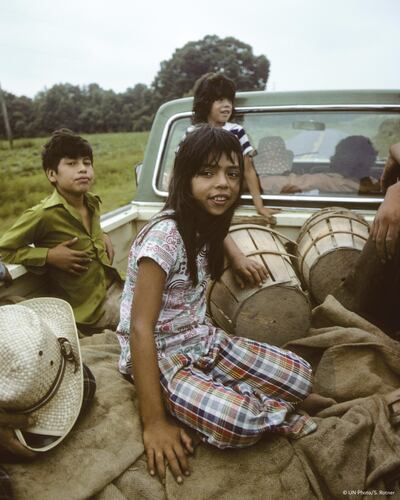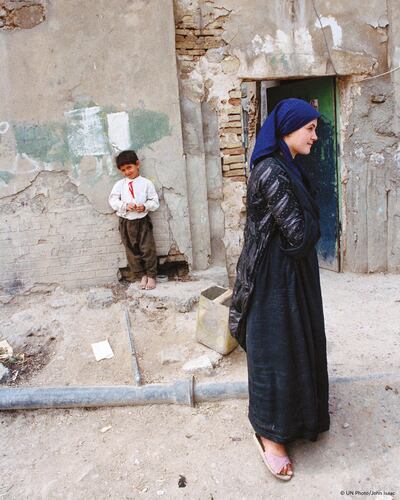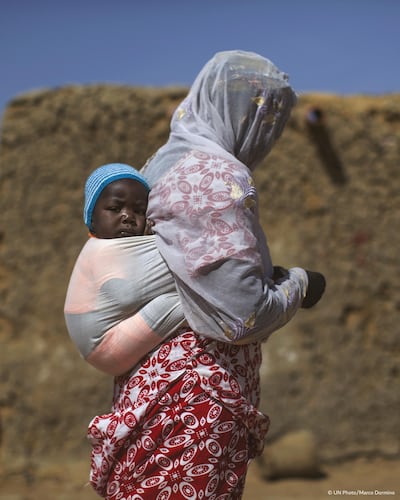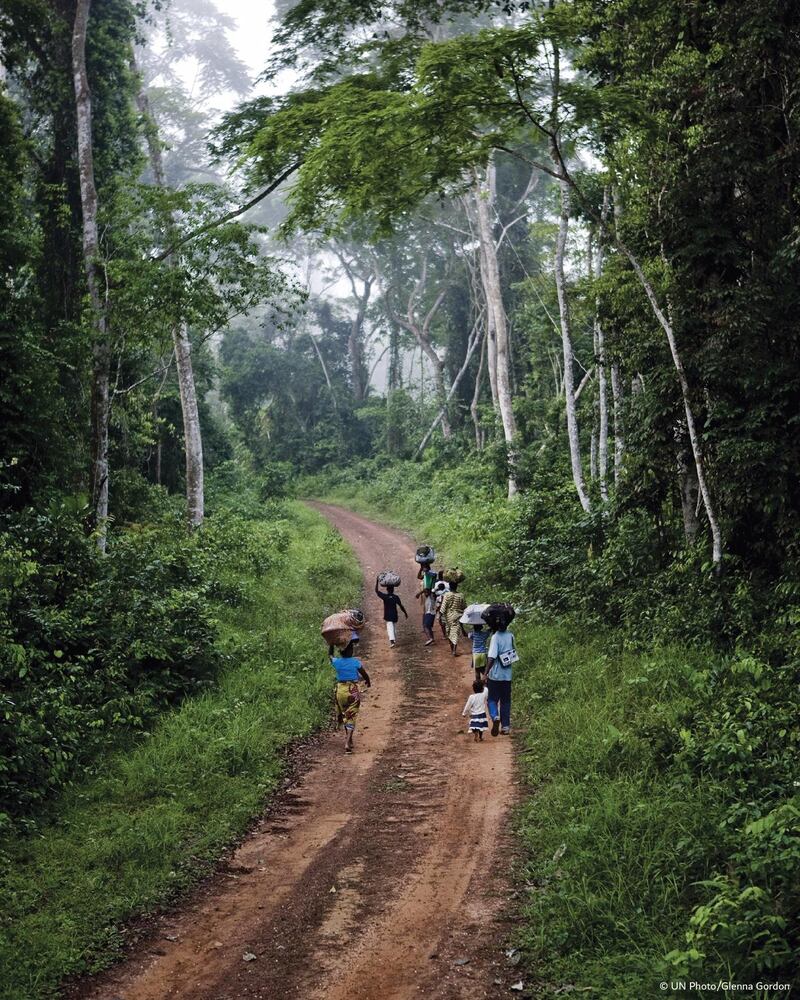Although most people living in the UAE have made the country a home from home, the grim reality of forced migration is not something many of us could imagine. Perhaps, if asked to do so, we may picture overflowing lifeboats in the Mediterranean or children being separated from their parents at the southern United States border. However, the hardships endured by people fleeing their homes and their efforts to rebuild their lives elsewhere has been going on for generations.
Photography exhibition People on the Move, on show at The Dubai Mall and hosted in collaboration with the UN, the International Photographic Council and the Hamdan bin Mohammed bin Rashid Al Maktoum International Photography Award charts the past 70 years of forced population movement. It features a collection of 55 images depicting scenes of humanity in the process of being displaced from or, in some cases, returning to their homes after many years of absence.
With their worldly possessions bundled together in cloth parcels and balanced upon their heads, a family of refugees is pictured making their way down a forest track in southern Liberia, fleeing violence in the Ivory Coast in 2011. In another image, child migrant workers are driven to the fields in the southern US and in a third, Roma civilians steer heavily laden horse-drawn carts in a search of safety in war-torn Kosovo in 1999.

Some of the older pieces include black and white photographs, such as an image taken in Copenhagen in 1956 in which a train full of children is seen arriving from the Hungarian Revolution. In another example of political migration from the same decade, a 13-year-old Latvian girl is pictured on a boat at New York harbour, arriving from Germany in 1951. This girl was the 150,000th person to be admitted to the US under the Displaced Persons Act of 1948. The image also marks an important date in history – the foundation of the Office of the United Nations High Commissioner for Refugees – and gives an invaluable perspective on what many consider to be a modern-day phenomenon.
The entire exhibition asks viewers to consider not only the sheer numbers of people displaced over the past seven decades, but to also remember their humanity. Alison Smale, under-secretary-general for global communications at the UN, says: "The images in the exhibition give a human face to these global phenomena, and the personal responses that they elicit serve to remind us all that we are all connected."
The exhibition was launched to mark United Nations Day on October 24 when an identical show opened in the visitors' lobby at the UN General Assembly building in New York. It feels especially relevant given last year, the UN said the world was facing its biggest humanitarian crisis since the end of the Second World War and today the number of international migrants worldwide stands at 258 million, or about 3.4 per cent of the world's population.

"Migration is not a norm, it is an exception," says Professor Ibrahim Sirkeci, director of Regent's University London's Centre for Transnational Studies and co-chair of the Migration Conference. "It is both something we have been always familiar with and equally rare, which makes it attractive to media."
However, what makes this exhibition important is it does not only reveal the plight of the refugees, but also their resilience.
The wide smile of the Tajik boy returning home from Afghanistan is as charming as the two men playing handmade wooden musical instruments in a camp in Liberia. The idea is to raise hope as well as act as a call to action.
Ali Bin Thalith, Secretary General of the Hamdan bin Mohammed bin Rashid Al Maktoum International Photography Award, said one of the aims of the exhibition was to underline the UAE's ongoing humanitarian efforts. The UAE stands as a kind of safe-haven beacon in a region beset by both the unresolved Palestinian-Israeli conflict and the massive upheaval of almost one third of Syria's population. Bin Thalith says this is a testament to the leadership of the UAE, which has "cultivated and nurtured tolerance as a cornerstone of our society's ethos".

Tolerance and giving have no borders, he says, pointing out that "the UAE has supported countless initiatives that provide relief to people on the move. This is something that our beloved father Sheikh Zayed bin Sultan Al Nahyan instilled into all of us."
About the lasting effects such an exhibition can have, Prof Sirkeci is a little more pragmatic. "These efforts to educate the public help us to normalise the perception of migration and [this exhibition] is one useful step to alleviate challenges of racism and xenophobia.
“But it needs to be accompanied by a comprehensive transnational peace effort to eliminate inequalities, injustices and insecurities within countries, within regions and among nations. Otherwise people will continue fleeing from these insecurities and mount more migration challenges.”
People on the Move is on show at the Fine Jewellery Concourse One Corridor of The Dubai Mall until November 20.
______________________
Read more:
An exploration of Lebanese identity through street art
Documenting the scars of war: Josef Koudelka in Beirut
The state of the art scene in Dubai: a look into how things are going





